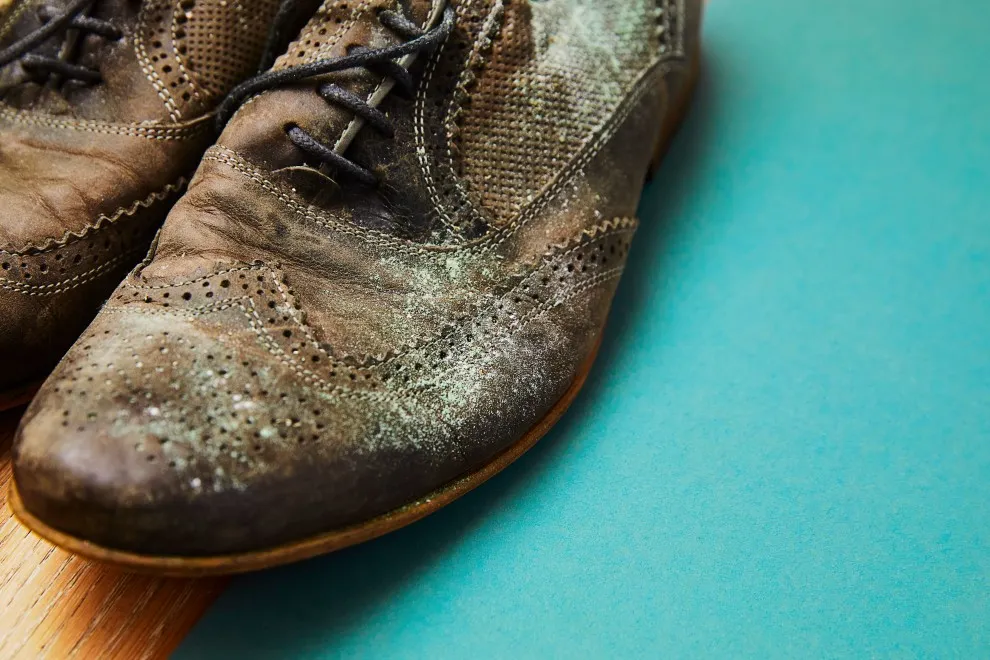Shoes are a vital part of our daily lives, and over time, they can fall victim to moisture, improper storage, or exposure to damp environments, leading to fungal growth. Cleaning shoes with fungus not only restores their appearance but also ensures hygiene and prevents unpleasant odors. In this comprehensive guide, we explain how to clean shoes with fungus effectively, using proven methods and materials you can easily access at home.
Why Fungal Growth Occurs in Shoes

Fungal growth thrives in moist, warm, and dark conditions, making shoes the perfect breeding ground. Factors contributing to fungal contamination include:
- Prolonged exposure to moisture.
- Wearing the same pair of shoes daily without sufficient drying time.
- Poor ventilation within the shoe.
- Sweat buildup, particularly during physical activities.
Understanding the root causes helps prevent recurrence after cleaning.
Step-by-Step Guide to Cleaning Shoes with Fungus
1. Gather the Necessary Supplies
To clean your shoes effectively, you will need the following items:
- White vinegar or rubbing alcohol.
- Baking soda.
- Soft-bristle brush or old toothbrush.
- Antifungal spray or powder.
- Mild detergent.
- Microfiber cloth.
- Warm water.
- Protective gloves.
- Sunlight or a shoe dryer.
2. Remove the Insoles and Laces
Start by removing the insoles and laces from the shoes. These parts are often more affected by fungus. Wash the laces separately using warm water and detergent, and set the insoles aside for treatment.
3. Brush Off Visible Mold or Fungus
Using a soft-bristle brush, gently scrub away any visible fungal growth on the shoe’s surface. This step prevents spreading spores during cleaning. Be sure to perform this task outdoors or in a well-ventilated area to avoid inhaling fungal spores.
4. Clean the Shoes Using a Vinegar Solution
White vinegar is a natural antifungal agent. Follow these steps for effective cleaning:
- Mix equal parts of white vinegar and warm water in a bowl.
- Dip a microfiber cloth or soft brush into the solution.
- Gently scrub the interior and exterior of the shoe, paying special attention to affected areas.
- Let the vinegar solution sit on the shoes for 15–20 minutes to neutralize the fungus.
5. Rinse and Dry Thoroughly
After cleaning with vinegar, wipe down the shoes with a clean, damp cloth to remove residue. Allow the shoes to air dry in a well-ventilated area or under direct sunlight. Sunlight has natural antifungal properties and accelerates the drying process.
Deep Cleaning for Stubborn Fungal Growth
1. Baking Soda Paste Application
For persistent fungal stains, create a paste using baking soda and water:
- Mix 3 tablespoons of baking soda with enough water to form a paste.
- Apply the paste to the affected areas and let it sit for 10–15 minutes.
- Scrub gently with a toothbrush and rinse with clean water.
2. Use of Antifungal Sprays or Powders
Antifungal sprays or powders are highly effective in treating shoes with severe fungal contamination:
- Spray or sprinkle the product inside the shoes and on the insoles.
- Let the shoes sit for a few hours, or overnight, as per the product instructions.
Treating Insoles and Laces
1. Washing Insoles
Insoles require special attention as they come into direct contact with your feet. Here’s how to clean them:
- Soak the insoles in a mixture of warm water and mild detergent for 15 minutes.
- Scrub both sides using a soft brush to remove fungal residues.
- Rinse thoroughly and allow them to dry under sunlight or with a dryer.
2. Cleaning Laces
Soak laces in a vinegar-water solution or wash them in a laundry bag using a washing machine. Ensure they are completely dry before reattaching them to the shoes.
Read Also: Are Columbia Hiking Shoes Good? A Comprehensive Review
Preventing Future Fungal Growth in Shoes
Once your shoes are clean, implement these measures to prevent fungal recurrence:
- Rotate your shoes: Avoid wearing the same pair daily to allow proper drying.
- Use moisture-absorbing inserts: Products like silica gel packets or cedar shoe inserts absorb excess moisture.
- Ensure proper storage: Store your shoes in a cool, dry place with good ventilation.
- Regularly clean and disinfect: Periodic cleaning and applying antifungal sprays help maintain hygiene.
- Wear moisture-wicking socks: These socks reduce sweat buildup inside the shoes.
When to Replace Fungal-Affected Shoes
In severe cases where fungal growth has deeply penetrated the material or the odor persists despite cleaning, replacing the shoes might be the best option. Fungal spores can embed deeply and may not be entirely removable, risking re-infection.
FAQs
Can I use bleach to clean shoes with fungus?
Yes, but only for white or light-colored shoes. Bleach can damage or discolor fabrics, so test it on a small area before use.
How often should I clean my shoes to prevent fungus?
Clean your shoes at least once a month or more frequently if they are exposed to damp environments or used for physical activities.
Is sunlight effective in killing shoe fungus?
Yes, sunlight is a natural antifungal and antibacterial agent. Regular exposure to sunlight helps reduce moisture and fungal spores.
Can leather shoes develop fungus?
Yes, leather shoes can also develop fungus if stored in damp conditions. Use specific cleaning agents designed for leather to treat them.
Keeping your shoes free from fungus is essential for maintaining foot health and prolonging the life of your footwear. Follow these steps to clean and prevent fungal growth effectively.
